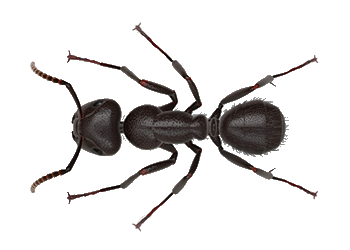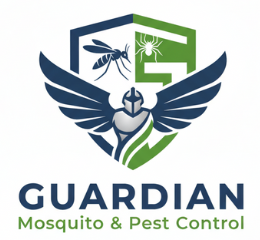
The Unseen World Beneath Our Feet: A Guide to Texas Ants and the Expert Touch of Bed Bug Texas Termite & Pest Control
Texas, a sprawling state with diverse ecosystems, is a veritable ant paradise, playing host to a staggering array of species. While many of these tiny creatures diligently work within the environment, contributing to soil aeration and nutrient cycling, others can become unwelcome invaders in our Katy homes and businesses. Understanding the types of ants prevalent in our region, their intricate life cycles, preferred habitats, and potential for rapid population growth is the first crucial step in effective pest management.
At Bed Bug Texas Termite & Pest Control, we are your local Katy experts in navigating this complex world of ants. We recognize the unique challenges these pests pose to homeowners and businesses and are dedicated to providing comprehensive, safe, and effective Ant Control Services to keep their populations in check and your property ant-free.
A Diverse Ant Kingdom: Common Texas Ant Species and Their Characteristics
Texas is home to over 250 native ant species, each with its own set of behaviors and ecological roles. In Katy and surrounding areas, several species are frequently encountered as pests:
- Red Imported Fire Ant (Solenopsis invicta): The notorious stinging menace of Texas. Easily identified by their reddish-brown color and aggressive defense of their distinctive soil mounds found in open, sunny areas. Their stings are painful and can be dangerous for those with allergies. Mature colonies can house hundreds of thousands of workers and multiple queens, leading to rapid infestation.
- Carpenter Ants (Camponotus spp.): Large, typically black or reddish-black ants that excavate wood to build their nests. While they don’t consume wood like termites, their tunneling can compromise the structural integrity of homes, especially those with moisture issues. They prefer damp or decaying wood but can also infest sound timber.
- Pharaoh Ants (Monomorium pharaonis): Tiny, light tan to reddish-brown ants with a penchant for sweets and greasy foods. Their ability to establish multiple interconnected colonies within a structure makes them a persistent and challenging indoor pest to eradicate with DIY methods.
- Acrobat Ants (Crematogaster spp.): Small, dark-colored ants easily recognized by their habit of raising their heart-shaped abdomens when disturbed. They often nest in decaying wood, tree cavities, and sometimes invade homes, emitting a foul odor when threatened.
- Odorous House Ants (Tapinoma sessile): Small, dark brown to black ants that release a tell-tale rotten coconut-like odor when crushed. They are attracted to sugary substances and can form extensive trails both indoors and outdoors, nesting in various concealed locations.
- Little Black Ants (Monomorium minimum): Small, shiny black ants that can nest in diverse locations, including decaying wood, cracks in pavement, and within the walls of homes. They have a broad diet and can be persistent invaders in kitchens and pantries.
- Argentine Ants (Linepithema humile): Highly invasive, small, brown ants known for forming massive supercolonies with multiple queens. They often trail along sidewalks, foundations, and readily enter homes in search of food and water, frequently outcompeting native ant species.
- Texas Leafcutter Ant (Atta texana): A fascinating outdoor ant that cuts leaves and other vegetation to cultivate a fungus garden in their large underground colonies. While primarily an outdoor pest, their foraging can impact landscaping in Katy yards.
- Harvester Ants (Pogonomyrmex spp.): Large, reddish ants that collect and store seeds. They create distinct, cleared mounds in open areas and can deliver a painful sting if their nests are disturbed, posing a risk in yards with children and pets.
The Ant Life Cycle: A Roadmap for Effective Control
Understanding the four distinct stages of the ant life cycle is crucial for developing effective pest control strategies:
- Egg: The queen ant lays eggs, the foundation of a new colony or expansion of an existing one. Fertilized eggs develop into female ants (workers or future queens), while unfertilized eggs become male ants (drones).
- Larva: Upon hatching, a legless, grub-like larva emerges, entirely dependent on worker ants for food and care. They are voracious eaters, growing and molting several times as they develop.
- Pupa: The larva then enters the pupal stage, a transformative period where the adult ant’s form develops. Some species spin a protective cocoon around the pupa.
- Adult: The final stage sees the emergence of a fully formed adult ant. The majority are sterile female workers, responsible for colony tasks. Reproductive queens are responsible for laying eggs, and short-lived male drones exist solely to mate with queens.
The duration of this cycle varies by species and environmental conditions, ranging from several weeks to months. Targeting specific stages of this life cycle, such as the egg-laying queen or the developing larvae, is a key strategy employed by professional pest control.
Habitat Havens: Where Texas Ants Establish Their Colonies
Ants are remarkably adaptable and can establish colonies in a wide array of habitats in and around Katy homes:
- Soil: The most common nesting site, particularly for fire ants, Argentine ants, and harvester ants, often resulting in visible mounds or extensive underground tunnel systems.
- Wood: Carpenter ants and acrobat ants are wood-nesting specialists, excavating galleries in both decaying and sound wood, posing a structural threat to homes.
- Leaf Litter and Debris: Odorous house ants and crazy ants often prefer nesting under loose organic matter, rocks, and logs in yards.
- Pavement Cracks: Pavement ants commonly build their colonies in the narrow confines of cracks in sidewalks, driveways, and foundations.
- Inside Structures: Pharaoh ants and little black ants are notorious for establishing nests within the protected environment of buildings, often in wall voids, under floors, and behind appliances.
- Trees and Vegetation: Certain acrobat ants and carpenter ants build nests in tree hollows, under loose bark, or even construct carton nests on branches.
Identifying the specific nesting habits of the ant species infesting your Katy property is paramount for Bed Bug Texas Termite & Pest Control to implement targeted and effective treatment strategies.
Population Dynamics: The Potential for Exponential Growth
Ant colonies exhibit a wide range of sizes, from small, localized groups to sprawling supercolonies containing millions of individuals. Population size is influenced by factors such as the species, the age of the colony, the number of queens (some species are polygynous, having multiple queens), and the availability of resources.
- Mature fire ant colonies can explode to contain hundreds of thousands of workers and multiple queens, leading to rapid expansion and the establishment of numerous mounds in Katy yards.
- Carpenter ant colonies, while typically having a single queen, can still grow to contain thousands of workers over time, with satellite colonies forming in different parts of a structure, exacerbating damage.
- Argentine ant supercolonies can be massive, forming interconnected networks of nests with countless workers and numerous queens, making them incredibly challenging to control without professional intervention.
- Texas leafcutter ant colonies represent complex societies with millions of specialized workers and intricate underground systems that can impact landscaping.
Understanding these population dynamics is crucial for Bed Bug Texas Termite & Pest Control. A seemingly small ant problem might be indicative of a much larger, well-established colony. Effective treatment often requires addressing the entire colony structure, including the queen(s), to prevent rapid repopulation and ensure long-term control in your Katy home.
Bed Bug Texas Termite & Pest Control: Your Katy Partner in Keeping Ant Populations in Check
While DIY ant control methods can offer temporary relief, professional pest control services from Bed Bug Texas Termite & Pest Control provide a comprehensive and strategic approach to managing ant populations in your Katy home, ensuring long-term solutions and protecting your property and family:
- Accurate Identification by Trained Professionals: Our experienced and certified technicians are experts at accurately identifying the specific ant species infesting your Katy property. This crucial first step allows us to tailor our treatment strategies to the unique behaviors and vulnerabilities of each species.
- Thorough Inspection for Hidden Colonies: We conduct comprehensive inspections of your home and surrounding property to locate all active ant colonies, including those hidden within walls, under floors, and in other concealed areas that DIY methods often miss.
- Targeted and Effective Treatment Strategies: Based on the ant species, the extent of the infestation, and the specific conditions of your Katy property, we develop customized treatment plans. This may involve a combination of non-chemical methods (e.g., baits strategically placed to target the colony, traps, exclusion techniques to seal entry points) and the judicious application of EPA-approved, professional-grade insecticides.
- Safe and Responsible Product Application: The safety of your family and pets is our top priority. Our technicians are rigorously trained in the safe and responsible application of all treatment products, ensuring minimal risk while maximizing effectiveness. We carefully select products that are proven to work against the specific ant species while minimizing environmental impact.
- Addressing the Root of the Problem: Colony Elimination: Unlike surface sprays that only kill foraging worker ants, our professional treatments target the heart of the ant colony, including the queen(s), to prevent future reproduction and re-infestation in your Katy home.
- Preventative Measures and Expert Advice: We provide valuable recommendations for preventative measures that Katy homeowners can implement to make their property less attractive to ants in the future, such as sealing entry points, eliminating food and water sources, and modifying landscaping practices.
- Follow-Up and Monitoring for Long-Term Control: We often offer follow-up services to monitor the effectiveness of our treatments and make any necessary adjustments to ensure long-term 1 ant control in your Katy home, providing you with lasting peace of mind.
- Local Expertise and Continuous Training: As your local Katy pest control experts, we possess in-depth knowledge of the specific ant species prevalent in the region and their seasonal behaviors. Our team undergoes continuous training to stay up-to-date on the latest advancements in pest control methodologies and the most effective and environmentally responsible treatment options available for Texas ants.
Don’t let the persistent problem of ants disrupt the comfort and safety of your Katy home. Trust the expertise and dedication of Bed Bug Texas Termite & Pest Control to accurately identify the ant species, locate their colonies, and implement targeted, safe, and effective strategies to keep their populations in check. We are your local partners in creating and maintaining a pest-free environment for your family. Contact our Ant Control in Katy today for a consultation and take the first step towards an ant-free home!
